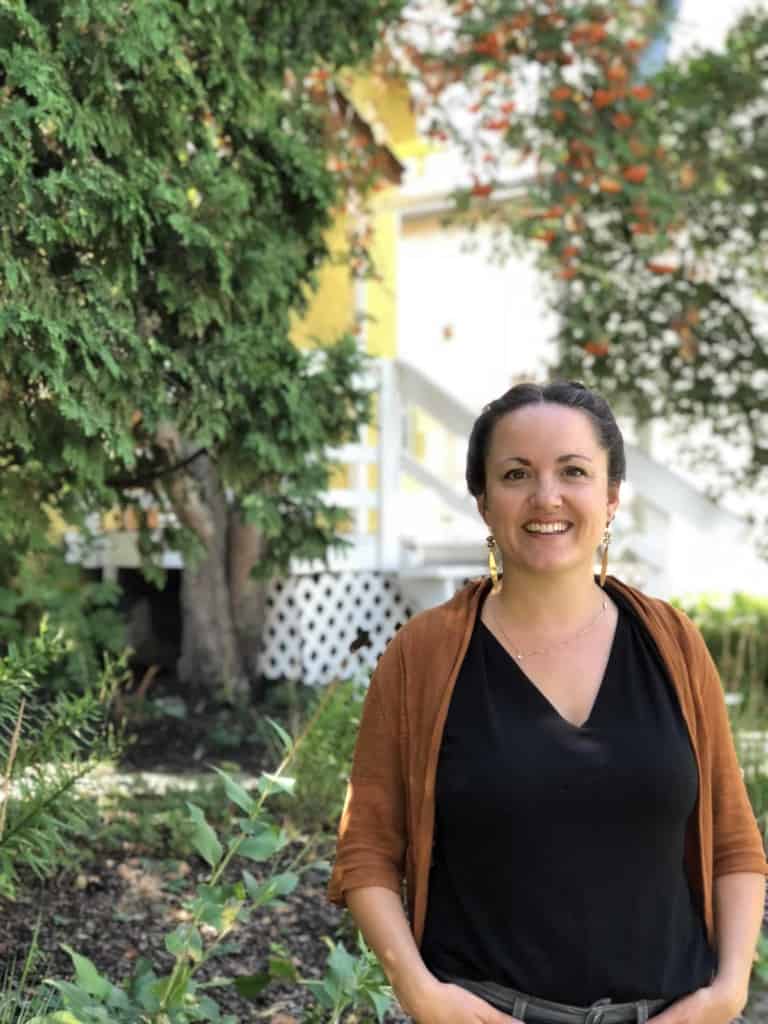The beauty and darkness of Alberta Avenue
In her book, Little Yellow House: Finding Community in a Changing Neighbourhood, Carissa Halton combines honesty, keen observation, and a devotion to the Alberta Avenue community.
Non-residents and people who only remember the old version of the Avenue should read her book. Halton was one of the forerunners in those advocating for change and many followed her, with homeowners now making the most of these beautiful older homes, growing the heart and the soul of their blocks and creating something enviable.
After Halton’s family moved to their house in 2004, she often heard people say, “It’s not a safe place. You’ll move when you have kids. You’ll move when your kids are in school.” She started writing essays about the community to deal with the negative predictions.
The contrast between her experience and the naysayers’ beliefs were constant. Even her grandparents questioned her choices. Her grandmother grew up in a third-floor boarding house overlooking the rink on 92 Street. Her grandfather inherited King Appliances on 95 Street. This community held family connections for Halton.
Halton and her family renovated their home for 14 years, making the little house their own. After they painted the house yellow, her neighbour, Laura, proclaimed the reflective light was so bright she had to pull her shades. Disallowed additional renovations necessitated a move to a larger house in the community.
When the Haltons first moved into their house in 2004, the City of Edmonton released a quality-of-life report rating Alberta Avenue a zero, affirming everything everybody else thought. “It completely missed residents’ lived experiences,” she said. Halton informs the reader of many groups like Zumba lessons, dog walkers, book clubs, plant exchanges, parent meet-ups, and seniors’ teas, for starters. Then there are concerts, plays, drive-in movies, and festivals. “There’s so much good,” Halton writes.

Many residents experienced further community improvements when groups collaborated. Halton writes, “The police created neighbourhood teams that coordinated local volunteers, community police, social workers, and crime data nerds. Each program required multiple levels of partners from neighbours to school staff to city workers which empowered many who felt there was nothing they could do.”
Gardening offered additional community connection. Halton’s neighbour taught her how to pollinate her squash plants with the male blossom’s central stack and admonished her to never “waste the male flower. Dip it in egg, cover in flour and fry to eat it like a pancake,” she writes.
Halton moves seamlessly from pollinating squash plants to Danny’s story, the city’s 40th homicide in 2011. On Oct. 8, Danny was murdered only five metres from her garage. Danny’s sister spoke openly to Halton, who, driven by curiosity and concern, needed to understand.
Even after Danny’s murder, Halton said, “I felt strongly I was not at risk. The people involved with crime were more at risk.” Crime increased awareness of the need to watch out for each other. Both the grit and “tragedy served to open up conversations with my kids. We talked about everything and learned how to be safe in our environment.”
Halton also wrote about everything. She wanted to capture this section of history so different from her grandparents’ experience. The writing clarified her experiences, making it easier to articulate what she felt. Joy and an investigative nature drove Halton to dissect the various views of her community.
Halton said, “There are elements of fear wherever we go. What makes a person feel safe? It is important to explore what makes you feel unsafe anywhere.”
Halton hopes people see Alberta Avenue, humanity, and how compassion and caring can change lives and environments. “Shitty is how you see it.” Halton said she firmly believes people will see what they look for. “If people look for beauty and love in their community, they will see it. I saw a lot of beauty along with the tragedy,” she said.
Halton’s book, speaking so eloquently about our community, can be found on Amazon, at Audreys Books, and at her book launch on Friday, Sept. 14 during Kaleido Family Arts Festival. You can also find Halton and her book at LitFest on Oct. 18.
Featured Image: Carissa Halton’s book is about her experience living in the area. | Rusti Lehay







